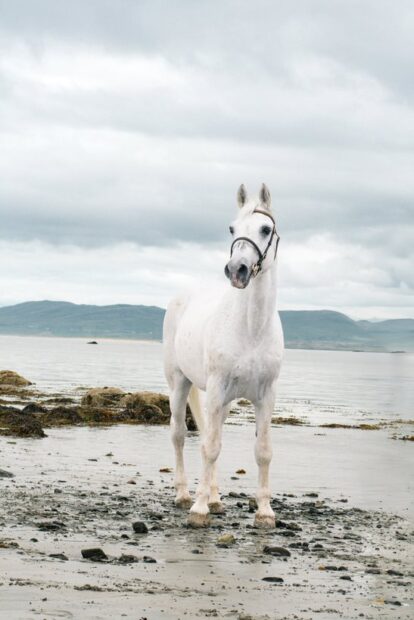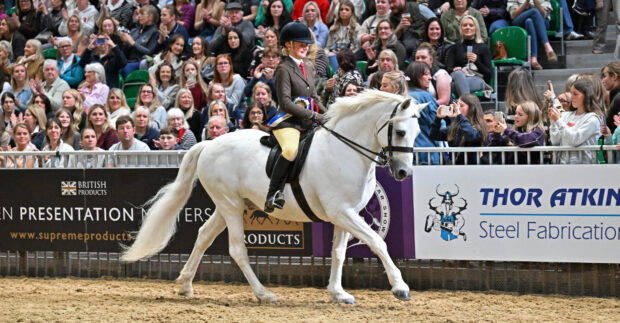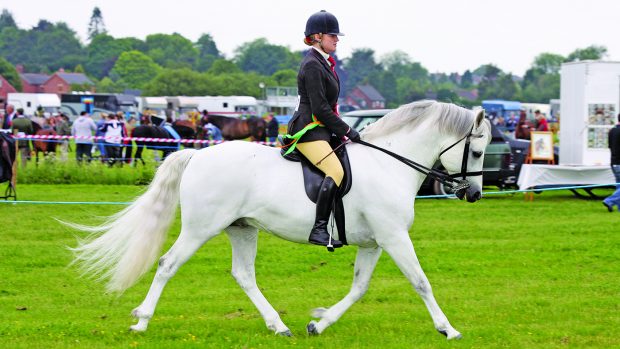The owner of a pony with an incurable disease that makes his hooves “like paper” hopes to raise awareness about the condition.
Sarah Cawley’s 13-year-old Connemara gelding Cloudy was diagnosed with hoof wall separation disease (HWSD) around four years ago.
The genetic condition, which affects some Connemaras and part-breds, is characterised by a hoof wall that easily breaks and cracks, and a coronary band that appears normal. This can result in losing shoes easily, and those affected can experience severe discomfort despite careful management. In some cases euthanasia may be necessary.
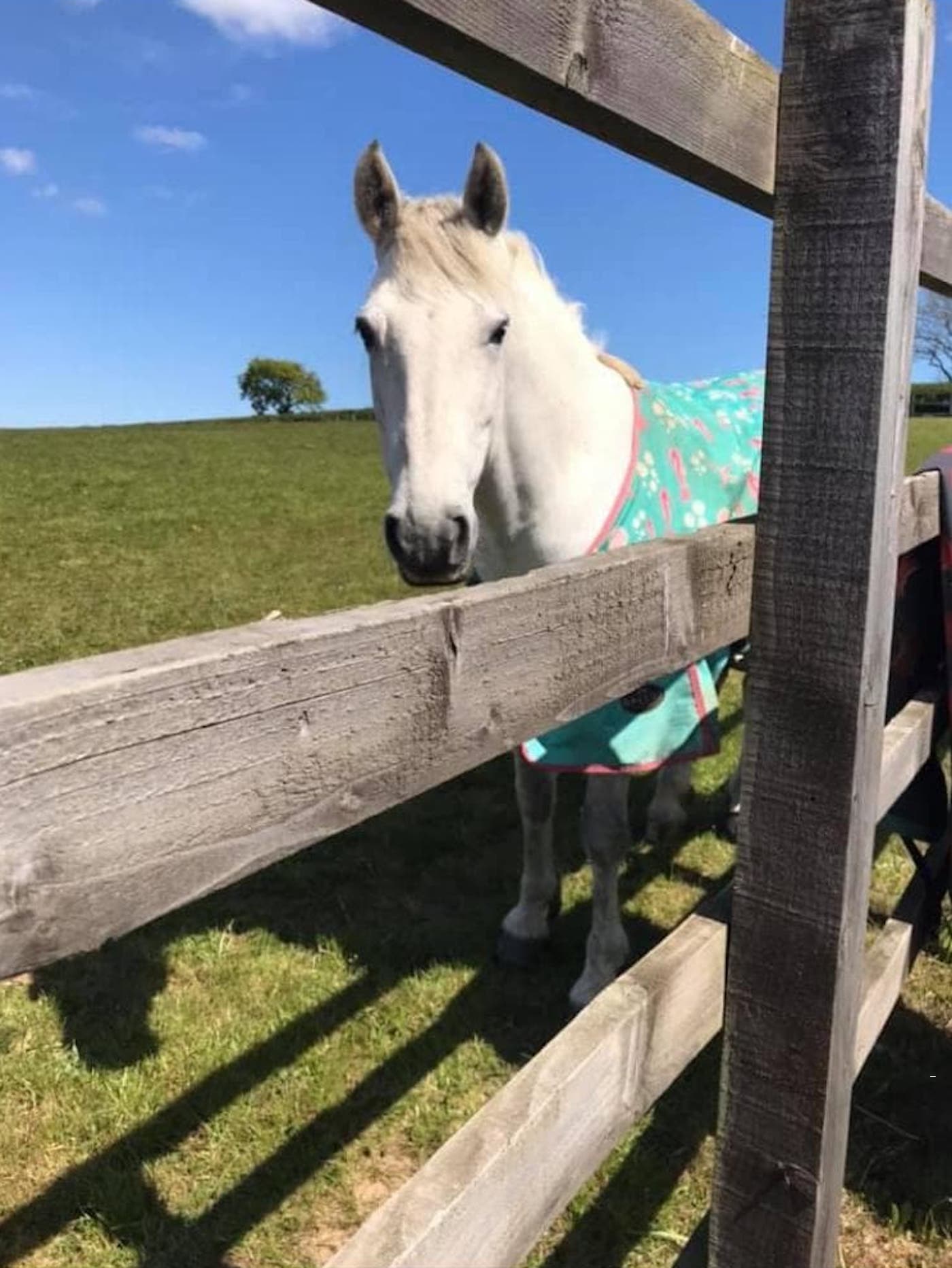
Sarah bought Cloudy from her aunt in 2017, and said he had always had “trouble” with his feet.
“I’ve known him since he was five when my aunt imported him from Ireland. He would lose shoes easily and we always just thought his hooves were fragile,” she said.
“The summer after I bought him his feet began cracking more than usual and one day he flung a shoe and half his hoof wall was attached. He was dog lame and couldn’t walk.”
Sarah contacted her vet and it was initially thought Cloudy had an abscess. X-rays were taken and Sarah read about HWSD online.
“Many people haven’t heard of HWSD as it’s not a common condition and it’s often mistaken for white line disease [when the external hoof wall separates from the underlying laminae resulting in the horn along the white line becoming crumbly and soft]. Farriers in the past have just thought Cloudy had bad feet. When the vets diagnosed HWSD they didn’t know what to really do about it so I was passed to specialist farrier, Neil Jackson,” she said.
“Neil has done lots of research on different ways to help Cloudy. There is no cure, and we just have to manage it the best way we can. He gets his feet done every four to five weeks and we use things like glue, or lightweight shoes with copper nails. At the moment he is barefoot behind and has shoes on front. We’ve tried hoof boots, but the trouble is because Cloudy’s feet change shape so quickly and often, the boots suddenly don’t fit even though I have lots of sizes. Sometimes he will be fine for a couple of months but then he can suddenly deteriorate and his hooves are like paper.”
Sarah said Cloudy continues to have good weeks and bad.
“Four weeks ago his feet looked absolutely fine, then two weeks later they deteriorated again. His back feet look like someone has taken scissors and slit them,” she said.

“It’s an awful disease but I’m really lucky because Neil does so much to help keep him comfortable, I’d be lost if he ever retired. It hasn’t changed how I see Cloudy, it’s not his fault. He’s the loveliest horse and he has a home with me for life. He’s in and out of work depending on how he is, on his good days he can be ridden in the arena but he’ll never be jumped and we don’t do roadwork or anything that might be hard on his feet.”
Awareness of HWSD has slowly increased over the years, and in 2016 the Connemara Pony Breeders’ Society introduced the requirement for all registered foals to be DNA tested to find out if they carry the gene mutation. The British Connemara Pony Society introduced the same requirement the following year. Older horses and ponies can also be tested.
More breeders and sellers are sharing test results in sale adverts to help buyers know if a horse or pony is a carrier of the gene. The test determines if ponies are normal (N/N), or if they carry one copy (N/HWSD) or two copies (HWSD/HWSD) of the mutation. Those that carry two copies are highly likely to be affected with hoof wall separation disease and only animals with the two copies will show clinical signs.
“When Cloudy was born there was no such thing as a test. He’s well bred, and there was nothing to suggest there was anything wrong when my aunt got him. It’s a really draining disease – financially and emotionally. I’m lucky I can afford to manage Cloudy, but others might not be able to and they could be faced with putting their horse down,” said Sarah.
“I hope by sharing my story this might help others and raise more awareness about HWSD. If your Connemara keeps losing shoes or has bad feet it’s definitely worth testing so you know what you’re dealing with.”
You might also be interested in:
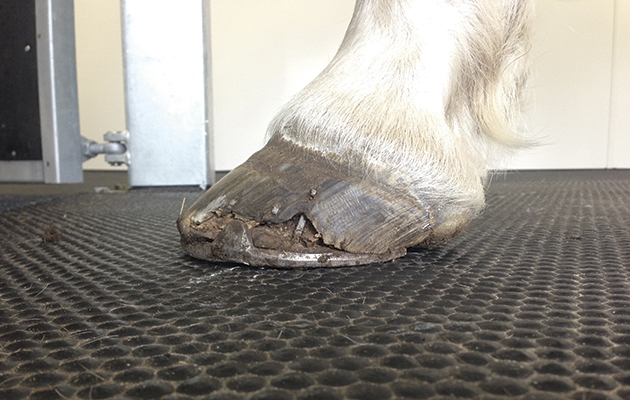
Hoof disease warning: Connemara ponies most at risk
Research is shedding light on a devastating hoof disease that can affect Connemara ponies. Richard Stephenson MRCVS explains
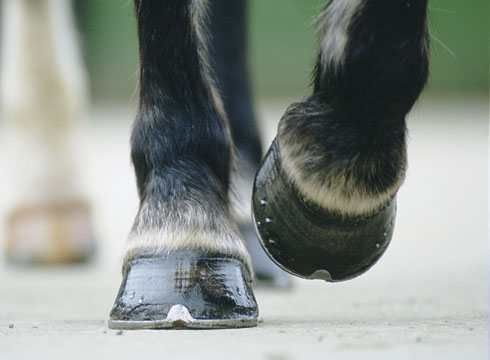
No foot, no horse – hoof supplements to help maintain healthy hooves

Subscribe to Horse & Hound magazine today – and enjoy unlimited website access all year round
Horse & Hound magazine, out every Thursday, is packed with all the latest news and reports, as well as interviews, specials, nostalgia, vet and training advice. Find how you can enjoy the magazine delivered to your door every week, plus options to upgrade your subscription to access our online service that brings you breaking news and reports as well as other benefits.


